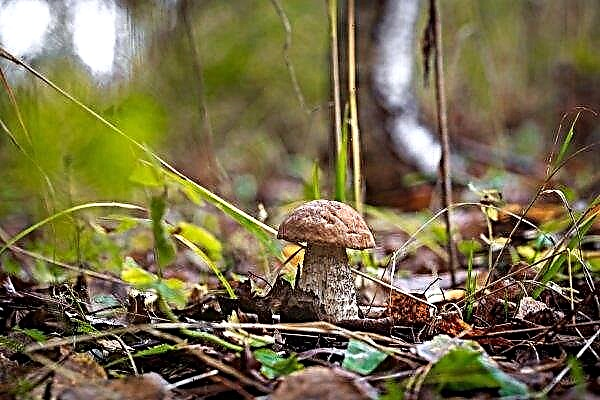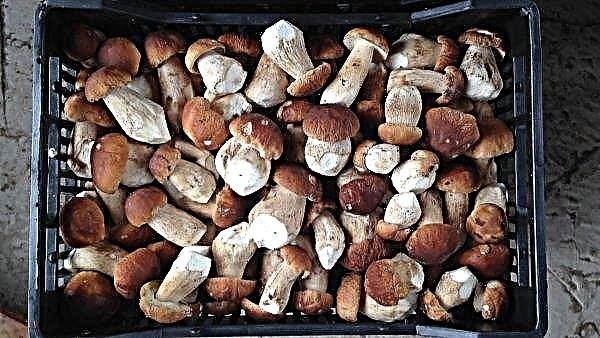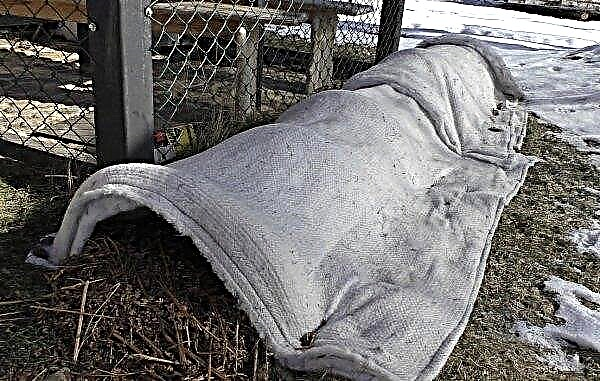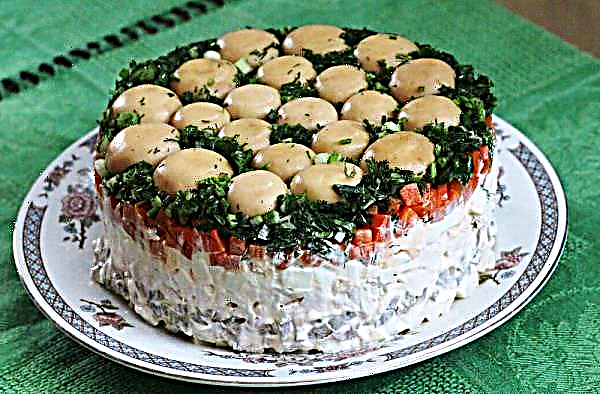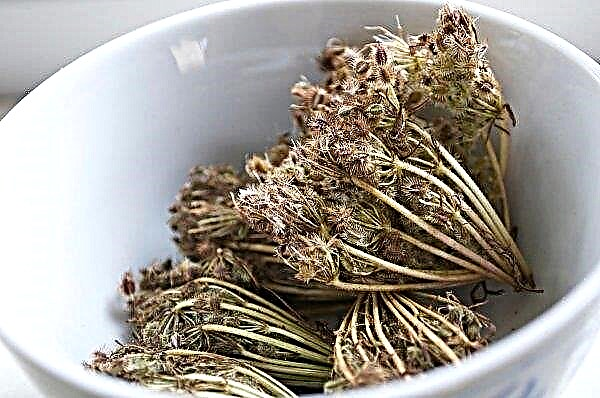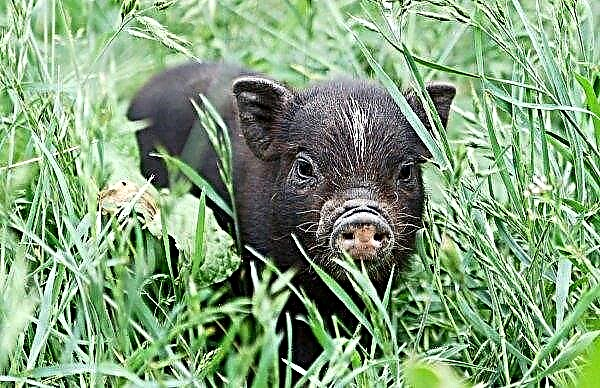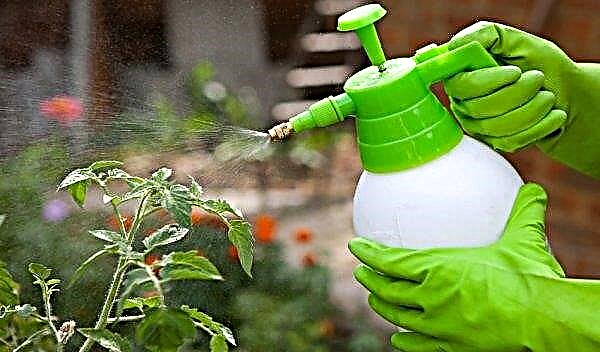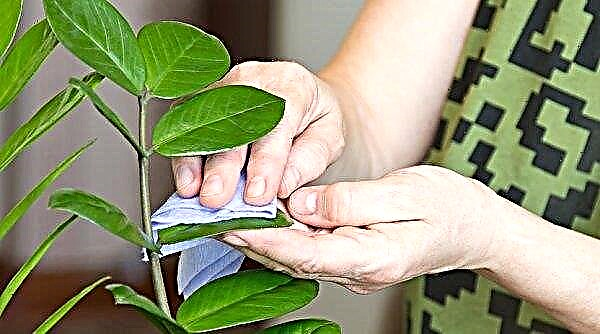Tulips are unpretentious and highly decorative. However, when growing them, certain rules should be followed, such as digging bulbs and planting them in the fall. This process must be approached very responsibly, especially if you plan to cultivate plants in the harsh climate of the Urals.
When to plant tulips in the Urals
Tulips in the Urals are planted in the fall. At the same time, they carry out landing in other regions. This is due to the botanical features of the development of the plants in question. Active vegetation (growth and flowering) occurs in the spring. In summer, the vegetation is at a dormant stage - the ground part completely disappears, and only the bulb remains in the ground. When autumn comes, active root formation and formation of buds of leaves, flower shoots begins.
The exact landing time is determined strictly by the climatic and weather conditions of a particular area. The fact is that in the Urals in different parts these factors can be very different. The polar zone is characterized by cold winters lasting about 8 months and short summers lasting no more than 1.5 months. In the southern part, on the contrary, the cold period is shorter than the warm one. Summer here takes about 4–5 months.

The approximate time for planting tulip bulbs in the Urals is August - early October, depending on the climate of a particular zone. Manipulation should be carried out when the temperature of the soil at a depth of 10 cm is + 10 ° C, and the environment - within +7 ... + 8 ° C.
When planting tulips in the autumn, it should be noted that they take 4 weeks to root. Accordingly, you need to carry out all the manipulations a month before the onset of frost. If the process is carried out belatedly, the root system of the bulb does not have time to fully form. As a result, in spring, flowering will come with a delay or will not start at all. If you plant the bulbs too early, the tulips will sprout shortly before the frost, which will lead to the death of the plants.
Autumn tulip planting
Proper planting of tulips in the open ground is the key to obtaining healthy, beautifully flowering plants. You must first select the area. Then prepare the soil and planting material.
The plot for planting tulips should be sunny, protected from draft, with a groundwater table not exceeding 1.5 m. An important role is played by crop rotation. Tulips cannot be planted after onions, garlic, potatoes, eggplant, pepper. These crops infect similar pests and diseases. Ideal precursors for tulips are legumes.

Soil and Bulb Preparation
Tulips should be planted in the Urals only in prepared soil. It should be with a neutral or slightly alkaline pH level (within 5-7 units). For deoxidation of soil, wood ash (500 g / m²) or lime (200 g / m²) is used. It is also worth paying attention to the structure of the earth - if it is dense clay, then sand must be added to increase friability. All preparatory manipulations with the soil in the Urals begin to be carried out 1-3 months before planting, in June - early August.
Important! Large planting material should be placed in the center of the flower bed, and small at the edges. This will prevent shading of small plants by large ones.
The general algorithm for preparing soil for planting tulips:
- Digging to a depth of 35 cm.
- The application of 10 kg of compost, 5 kg of sand, 150 g of wood ash, 50 g of superphosphate, 20 g of ammonium nitrate and 30 g of potassium sulfate per m².
- Digging to a depth of 35 cm, followed by leveling the area with a rake.

Planting material is first sorted. The largest and most beautiful flowers give large, heavy bulbs, with a shiny, evenly painted, integumentary film that adheres well to the surface. From small daughter growths, small tulips form on shortened peduncles. Sometimes such planting material does not give flowers at all.
Bulbs with traces of pests, mold spots, unevenly colored, it is better to throw it away. If you drop them, then the entire bed will be infected. To disinfect planting material, before planting it is immersed in a saturated pink solution of manganese for 30 minutes. The bulbs are dusted with wood ash immediately before immersion in the ground.

Outdoor Landing Algorithm
You can plant tulip bulbs in holes or furrows. Between the rows leave a distance of 20–25 cm, between plants - 8–10 cm. The planting depth depends on the size of the bulbs and the density of the soil. Small specimens are immersed in the ground by 7–8 cm, large ones by 12–15 cm. If the soil is light, then these parameters are increased by 2-3 cm, if heavy, they are reduced by 2-3 cm.
Important! Approximately 1 m² can accommodate up to 50 large and 100 small tulip bulbs. With a denser planting, the risk of contracting diseases / pests increases, and the care of the flower bed is also complicated.
The algorithm for planting tulips in open ground:
- Form holes or furrows of the required depth.
- Place the planting material in the recesses, taking into account the above parameters.
- Press each onion into the soil.
- Sprinkle the planted material on all sides with sand, and then with a mixture of peat and compost (1: 1 ratio).
- Lightly tamp the surface of the earth on the bed. Water planting at a rate of 10 l / m².

Planting in pots or baskets
Tulip can be planted not only directly in the open ground, but also by dropping in a container. It can be a pot or a basket. The main condition for such flower cultivation is that the container must pass water well. To do this, you can independently make holes in the bottom and walls of the vessel.
You can buy containers for planting tulips in specialized stores or you can take plastic, clay pots, edged bowls, buckets, as well as wooden baskets or boxes that have become unusable. The size of the container is selected taking into account the fact that the vegetation will be located at a distance of 8-10 cm from each other, 20-25 cm in the aisles and at a depth of 7 to 15 cm (depending on the size of the bulbs).

Algorithm for dropping planting material in containers:
- Dig a hole 2 cm longer and wider than the tank.
- Fill the pot with a substrate consisting of equal parts of peat, sand, compost and garden soil. To this composition add 100 g of wood ash, 20 g of superphosphate and 20 g of ammonium nitrate.
- Place the planting material in the tank, observing the planting parameters (depth, distance between plants and in rows) indicated above.
- Pour onion bulbs with a nutrient substrate, compact the soil surface and water the plantings.
Video: Planting tulip bulbs in a basket
Further tulip care
Caring for tulips is not difficult. The main thing is to follow the basic rules of agricultural technology. Caring for vegetation is to do the following:
- timely removal of weeds from the garden;
- fertilizer application;
- soil mulching;
- the introduction of a sufficient amount of water into the soil;
- wintering landings.
After the emergence of seedlings, it will be necessary 2 times during the period of active vegetation of the plants to top dress. The first is introduced after the snow melts into moist soil to a depth of 5 cm. At this stage, nitroammophoska is used. 30 g of substance are added per 1 m². At the time of formation of the buds, watering is carried out with the addition of potassium-phosphorus elements. 20 g of superphosphate and 10 g of potassium salt are dissolved in 10 l of water. This amount is enough for fertilizer 1 m² area.
Weed weeding
Throughout the season, care should be taken to ensure that the area is not filled with weeds. They will take food from tulips, which will contribute to a decrease in their immunity, and, accordingly, to the rapid multiplication of diseases and pests.
Manipulation is carried out as necessary. They also regularly loosen the soil to a depth of 5 cm. It is best to manipulate one day after irrigation. This allows you to increase oxygen access to the roots and evenly distribute moisture in the soil.

Mulching
Immediately after loosening and removing weeds, mulching is carried out. Agrotechnical method allows to slow down the spread of pest plants, as well as retain moisture in the soil for longer. You can use hay or freshly cut grass as mulch throughout the season. Also a good option is the combination of sawdust and peat (1: 1).

Watering
Proper care of tulips involves adding enough water to the soil. These plants have a weakly branched surface root system, so with the slightest drying of the soil they begin to grow worse, and the flowers become smaller. There is no specific schedule for irrigation. Orientation should be strictly on the weather and stages of vegetation.
Most plants need extra moisture:
- during budding;
- during flowering.
The soil under the tulips should be loose and moist at a depth of about 10 cm. 200-500 ml of water is consumed for each plant during irrigation. At the end of flowering, watering is carried out 3 more times. About 1 per week.

Winter insulation
After autumn planting, the plantations do not need to be maintained. Unless the weather is too dry, you have to irrigate. About 10 liters of water are consumed per m².
With the advent of cold weather, when the temperature drops to 0 ° C, the territory is insulated with mulch. To do this, lay a layer 10 cm high, consisting in equal parts of sawdust, peat, sand and compost. If there is little rainfall in winter, then surely you should make a snowdrift over the tulip landings from the existing snow. Under such shelter, the flowers will normally remain, and in the spring they will give friendly shoots.
Did you know? During World War II, tulip bulbs were used by the Dutch. Today, dishes from different parts of this plant can be found in restaurants in Holland, France and China.
When to dig out tulips after flowering in the Urals
As already described above, tulips differ from other plants in stages of vegetation, and in summer they are at rest. During this period they will need to be dug up. The quality of planting material depends on this event. If it is held late or too early, the bulbs will not take root during planting.
In order for the planting material to fully form during the growing season, when the flower is fully opened (this is about 4 days from the beginning of flowering), it must be cut off. After such manipulation, the plant does not form seeds, and, accordingly, directs forces to increase the size of the bulb. Also, when tulips are cut for a bouquet, you need to leave at least 3-4 leaf plates on the plant. They are necessary for root nutrition.

Digging Dates
They begin to dig out tulip bulbs when the leaves turn yellow, lose turgor and begin to dry out. Do not wait for the complete death of green mass. Bulbs overexposed in the ground are affected by bacteria, as their integument is destroyed. Too early dug planting material is not yet ripe enough. Accordingly, he can not give full-fledged sprouts. Dig onion material in sunny, dry weather.
How to dig
To perform the manipulation, a pitchfork or a shovel will be required. Step-by-step instructions for digging out tulip bulbs:
- Set garden tools 15 cm from the bush vertically. In no case should you place the shovel (pitchfork) at an angle. Otherwise, the risk of cutting the bulb is very high.
- Deepen the inventory 20 cm into the ground.
- Raise the soil layer with the onion. Set aside.
- Perform similar manipulations with other plants.
- Carefully separate the soil from the bulbs by hand. In order not to damage the skin, it is better to wear gloves.
- Separate the child bulbs from the mother ones.
- Leave planting material in the beds for a couple of hours, dry under the sun and ventilate.
Video: How to dig and store tulips
Bulb Storage
Before storage, planting material must be prepared. To do this, first remove the roots on the bulbs. Then sanitize the raw materials. To do this, you can use the drug "Maxim". 4 ml of the drug (whole ampoule) are dissolved in 2 l of water. The raw materials are soaked in a solution for 30 minutes. The specified amount is enough to process 2 kg of planting material.
After soaking, the raw materials are dried for 2-3 days in the fresh air, but always in the shade. It is best to do this under a canopy.
Did you know? Tulips of different colors have their own symbolic meaning. So, red flowers represent passion, love, yellow - wealth, white - a prayer for forgiveness, repentance.
Immediately after drying, planting material is placed in a warm, dry, well-ventilated area. The optimum storage temperature is +20 ... + 30 ° С. Closer to mid-August, you need to start gradually lowering the temperature to +14 ... + 10 ° С. If this is not done, the raw materials may not respond well to landing in cold soil. It is best to place the material in wooden crates in one layer in the attic. Bulbs cannot be stored in a cellar or in a refrigerator, since in these places the temperature regime does not correspond to what is required.

It is very easy to grow tulips in the Urals, despite the harsh climate. The main thing is to comply with agrotechnical requirements and study in detail the features of plant vegetation. Then your garden will be fragrant every year with beautiful flowers and delight the eye.

